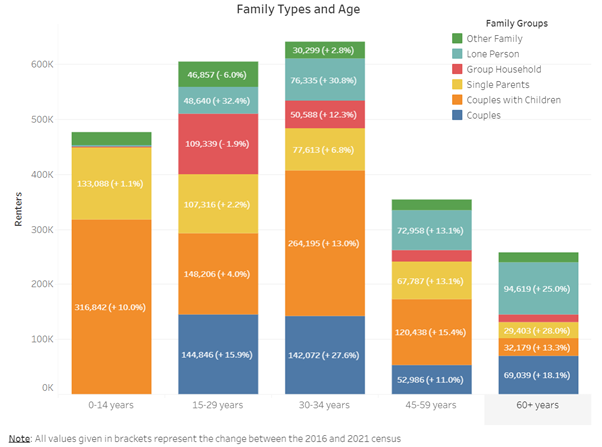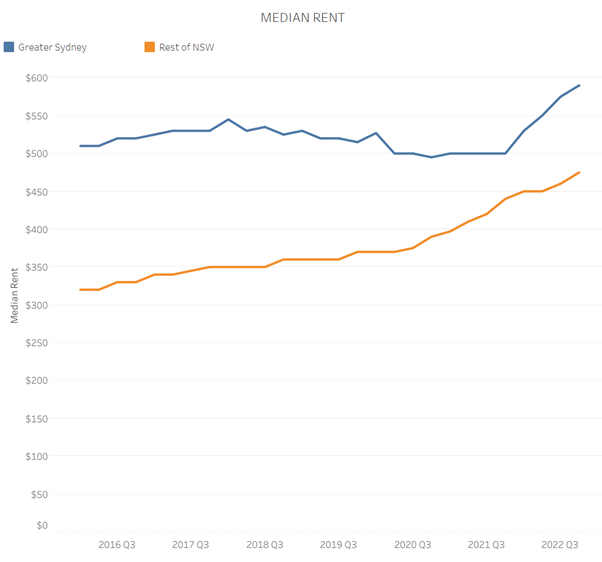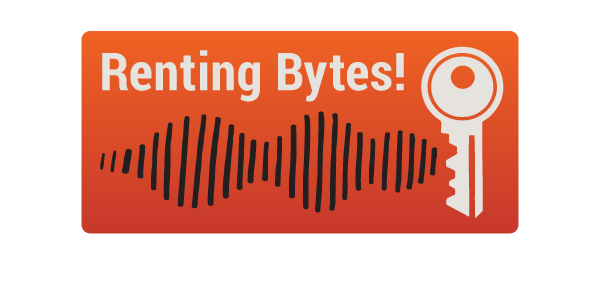The 2023 NSW election could be a renters' election #RentersElection2023
Jemima Mowbray • 06/02/2023
More renters than ever will vote 25 March
More renters will head to the polling booths for the NSW State Election on 25 March than ever before. According to the 2021 Census around 30% of people in NSW rent their home. 55% of all renting households are families with children (either couples with children, or single parents with children), and just over a quarter of a million are renters over the age of 60. Around 6% of renters are Aboriginal, and more than a third (35.6%) speak a language other than English at home. The number of renting households has grown by over 17.5% since 2016, and the 2021 Census shows it's the fastest growing tenure in NSW.
Take a look at our analysis and breakdown of data about renting from the 2021 Census data for your local LGA or state electorate via the State of the Renters NSW tool published today.

A focus on cost of living: energy and housing costs
As it was at the Federal election, cost of living is a focus coming into the NSW state election end of March - both in terms of housing costs, but also energy bills. Housing and energy are the two most significant costs a household faces each week. Across NSW all households, but especially renting households are feeling increased pressure in relation to both since they voted last May.
In October last year the Australian Energy Regulator (AER) reported that the number of energy customers needing hardship support had increased significantly compared to pre-pandemic levels, and the average debt of those on hardship programs was considerably higher - around 30 - 40% higher than pre-pandemic levels. Research from Victoria late last year shows that where households are facing these cost of living pressures, renters generally find things more difficult and are more likely to skip meals or need to seek payment assistance to pay energy bills. While intervention from the Federal Government - including price caps and additional energy rebates - is predicted to provide some relief over the next 12 months, many households will struggle when their next energy bills are due as it may take some time for these measures to take effect. And prices are still increasing in some sectors - gas prices for residential customers, for example, increased earlier this month with prices for AGL customers in NSW going up by 9% (around $78 a year).
Renters generally spend more on energy bills than homeowners because rental properties are less efficient to heat and cool. Research from the Crawford School of Public Policy at ANU published last year estimated the impact of tenure at around 8% or $150 more each year for their energy bills because of the inadequate standards in their rental home.
NSW is facing a rental housing crisis.
But energy costs still trail behind rents in terms of how much of a household's weekly pay packet they eat up. Even prior to the pandemic renters faced higher housing costs than homeowners. Renters in the private rental market are more than four times as likely to be in housing stress than home owners. Almost two thirds of low income private renters are in rental stress - that is, paying more than 30% of their income on rent each week. Research released November last year estimated 221,500 households in NSW were either experiencing homelessness, in overcrowded homes, or in rental stress at the last census.
Since then rents have soared across NSW. Median rent in metro areas is now $590, and in regional NSW $475 - that's up a hefty 18% across Greater Sydney, and around 8% in regional areas over just the last 12 months. The slightly lower increase in regional rents over the last year is better understood in the context of an increase of 28% on pre-pandemic levels: regional rents rose sharply in 2020-2021 and since then have continued to climb, but more steadily.

1 Jan 2016 to 31 Dec 2022, Source: Rent Tracker Area Tool
We regularly hear from renters about the direct impact of increasing rents and the difficulty they face in finding and securing an affordable rental home.
"I received a no grounds eviction 3 weeks before christmas, and struggled to find a new rental for myself and my cat. In Sydney it seems there's nothing decent under $500. I'm on my own so that's a lot to pay."
NSW Renter via Facebook
Increases in rents during a tenancy are much harder to track. But we know many across NSW are receiving notice of an increase - of up to $270 a week in some reported cases. Renters often don't feel able to challenge an increase, even when it seems excessive and even when it makes the property unaffordable for them.
"We accepted a $100 a week rent increase because we couldn’t afford to move and didn’t want to move when the kid was doing HSC. Now we are paying over 30% of our combined income in rent [...] Just because mortgage interest rates went up doesn’t mean our income went up! And prices have definitely gone up so our ability to pay has actually gone down."
NSW Renter via Facebook
Just one more example. At the end of last year we provided advice to one renter who receives Disability Support Payment (DSP). They had been living in their rented home for 13 years, and had just recieved a rent increase of $100 a week. This would increase their rent to take the whole of their DSP payment, forcing them to rely on charities for food and other groceries. Attempts by the agent to negotiate a smaller rent increase with the landlord had gone nowhere. While the renter was advised they could challenge the rent increase as excessive, they decided against this. They were too scared the landlord would simply kick them out.
#RentersElection2023
The NSW state election comes in the middle of this rental housing crisis.
Just as the numbers of renters in the NSW community has grown considerably, in a number of key marginal seats renters make up a significant proportion of the electorate. In Parramatta 56% of the community are renters, in Ryde 42.7%, in Penrith and Drummoyne around 36%, and in Oatley and Epping it is just over 30%. In a number of other marginal seats Riverstone, Holsworthy and Badgery's Creek the proportion of renters sits around 23 to 28%, which while lower than the state average, represents a significant increase (over 5% growth) in the number of renters in the electorate since the previous census. And in the marginal seats identified, the annual increase in rents in the area starts from 9.3% (in the East Hills electorate, relatively low for Greater Sydney) through to 15% increase in Parramatta, 16.9% in Drummoyne, and 17.7% in Oatley.
It's clear to us that voters, especially in many of these marginal seats, will directly be confronting pressures from increased rents and high energy costs. Renters and their families are calling out for support, and renters in key seats will be looking to policies that actually address renters' concerns.
“We believe the 2023 NSW election is a renters’ election. At this election renters' issues will matter, and how parties are addressing the problems renters face may well be a deciding factor. Parties and politicians on all sides need to be talking about how they are going to go about fixing the rental housing crisis.”
Leo Patterson Ross, CEO, Tenants' Union of NSW
NSW Labor and the NSW Greens have released their election platforms, both with a clear focus on rental reform but with varying levels of detail on their policies. We're still waiting on clear election commitments in relation to renters from the NSW Government - though there have been some albeit limited reform initiatives announced in the last few months that suggest the government is aware of the need for action on this front (see our analysis of rent bidding reforms, and the Government’s consultation on changes to introduce more pet friendly renting laws). Later this month we'll be publishing an Election Tracker that outlines the parties' policy announcements and provides a brief analysis of what the announcements might achieve in practice.
In the lead up to 25 March the pressure is now on for political leaders to demonstrate they understand the urgency of the problem and what they will do when they form government to address the issues around affordability, security and the basic health standards of rental properties that renters are raising.




